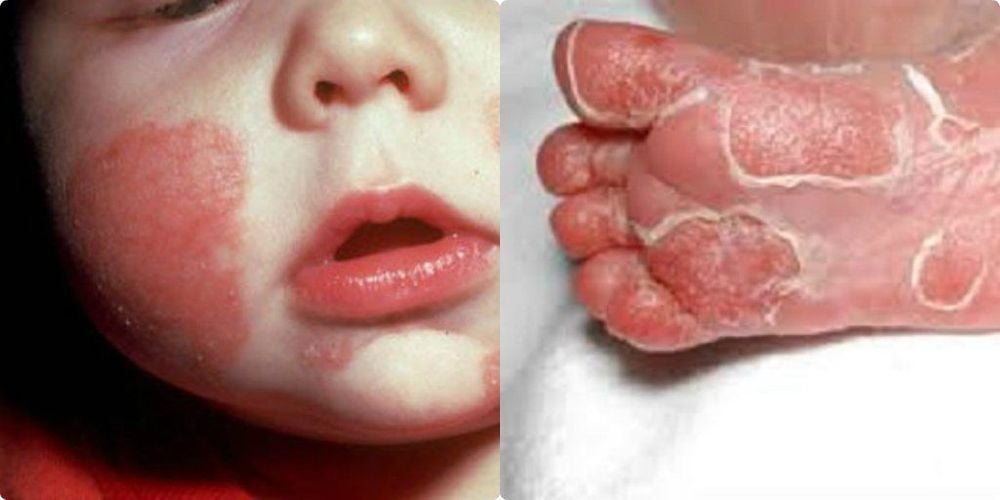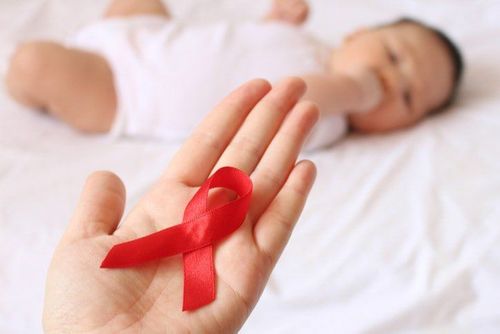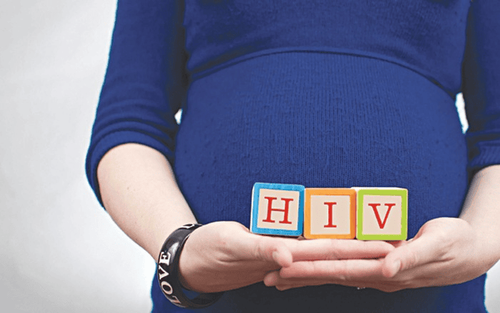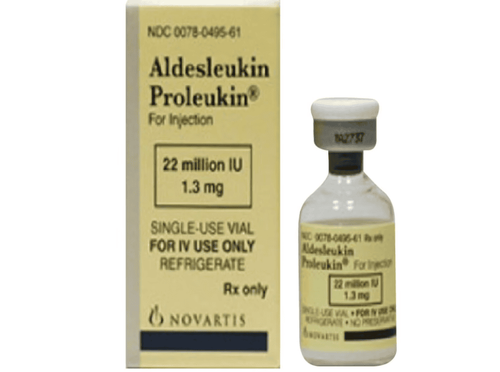This is an automatically translated article.
Clinical manifestations of HIV/AIDS in children are mainly manifestations of opportunistic infections and neoplasms. Clinical manifestations will change in many organs and are often confused with many other diseases.
1. Clinical manifestations of children infected with HIV
Children with HIV will progress to AIDS very quickly. Early studies show that 50% of children with AIDS are diagnosed within the first year of life, and 82% by age 3.
1.1. Clinical manifestations are not specific For children with vertical transmission from mother to child, after birth the child is still normal, or only has low birth weight. After HIV infection is the stage when the virus enters the bloodstream, there may be some symptoms similar to other viral infections such as low-grade fever, muscle aches and pains, nothing specific.
1.2. Opportunistic infections Fungal infections: Candida, cryptococcal, Aspergillosis, Histoplasma. Parasitic infections: Toxoplasma, cryptosporidium enteritis, amoeba, malaria. Opportunistic bacterial infections: Tuberculosis, Mycobacterium avium. Gastrointestinal infections caused by salmonella, Shigella, E. coli, Campylobacter. Skin infections caused by impetigo caused by staphylococcus, streptococcus. Urinary tract infections caused by E. Coli. Syphilis, contraband. Viral infections: Cytomegalovirus, Herpes simplex, shingles, chickenpox, measles, viral hepatitis, Epstein Barr virus. Pneumonia: In HIV-infected children, Pneumocystis carinii pneumonia and Cytomegalovirus pneumonia are the most common opportunistic infections, accounting for 52% of pediatric patients. Good treatment for opportunistic infections reduces the annual risk of dying in children with HIV.

Nhiễm trùng cơ hội ở trẻ nhiễm HIV
1.3. Gastrointestinal manifestations Diarrhea and dysphagia are common manifestations in up to 30-40% of HIV-infected children.
Diarrhea lasts for weeks, causing dehydration and weight loss. Diarrhea is usually caused by intestinal agents such as E.coli, Shigella, Salmonella, Campylobacter, Entamoeba histolytica,... However, many cases of this diarrhea respond to treatment.
The cause of difficulty swallowing in children with HIV is a Candida infection in the mouth or esophagus. The disease will also respond to treatment with antifungal drugs.
1.4. Skin manifestations Skin manifestations are very common symptoms of HIV in children. Many skin manifestations can be clinically diagnosed such as zoster, herpes virus infection, oral candidiasis, anal, genital, impetigo, recurrent boils, pore inflammation, papova virus infection causing mucinous lumps in the area. neck and trunk, itchy papules, leukoplakia at the edge of the tongue.
1.5. Generalized lymphadenopathy Systemic lymphadenopathy occurs early in HIV infection. Clinical manifestations are:
Swollen lymph nodes over 1cm, lasting for more than 3 months; Multiple lymph nodes in multiple lymph nodes, often in the groin, armpit, and elsewhere; The lymph node is firm, painless. As the disease progresses, the lymph nodes gradually shrink and disappear, so the lymph nodes are enlarged and then gradually shrinking, which is a sign of severe prognosis. If the lymph node reappears after it disappears, it may be a lymph node of tuberculosis, a lymph node of metastatic cancer, or a lymphoma. 1.6. Autoimmune diseases Many autoimmune diseases occur in HIV-infected children, specifically:
Autoimmune thrombocytopenia: Causes subcutaneous hemorrhage, most of which are detected antiplatelet antibodies and immune complexes in the blood. Autoimmune hemolytic anemia: The solution is to give blood to the child. Cardiovascular autoimmune diseases such as: pericarditis with macrocytic mononucleosis, myocarditis, endocarditis. 1.7. Neurological manifestations Clinical manifestations of neurological disorders in HIV-infected children are quite high. These manifestations are mainly caused by HIV infection, others are caused by opportunistic infections and cancers.
Symptoms of HIV in children in this clinical presentation usually begin with the following manifestations:
Decreased intellectual functioning; Memory disorders; Movement disorders; Abnormalities of muscle tone, cerebral palsy; Sensory disturbances. In the first two years there may be a baby brain. Computed tomography showed brain atrophy with dilated ventricles.
2. Caring for children infected with HIV

Trẻ nhiễm HIV cần được chăm sóc đặc biệt
Nutrition: Since HIV is found in breast milk, even in colostrum, the risk of transmission from HIV-positive mothers to their babies is 15-20%, so replace breast milk with milk substitute. Don't give your baby both breast milk and replacement milk because it increases the chance for HIV to enter the baby's body.
Mental support: HIV-infected children can still go to kindergartens, kindergartens, and regular schools because there is no risk of infection through casual contact. Only doctors, teachers, caregivers and family members know to coordinate in caring, monitoring, teaching and helping children. Thanks to the help of social organizations, humanitarian organizations, charity with children's families.
Body hygiene: Take care of skin, nose, throat, and teeth hygiene regularly for children to reduce the risk of opportunistic infections.
Health monitoring: Children with HIV need regular health monitoring. Regular check-ups, for early detection of disease progression, immune status and infections.
Immunization: An important preventive measure for HIV-infected children, although the antibody response after vaccination is poor. However, the World Health Organization recommends vaccinating children without symptoms even if they already have symptoms.
To register for examination and treatment at Vinmec International General Hospital, you can contact Vinmec Health System nationwide, or register online HERE
MORE:
3 possible times mother-to-child HIV transmission Prevention of mother-to-child HIV transmission Caring for and nurturing newborns of HIV-infected mothers













